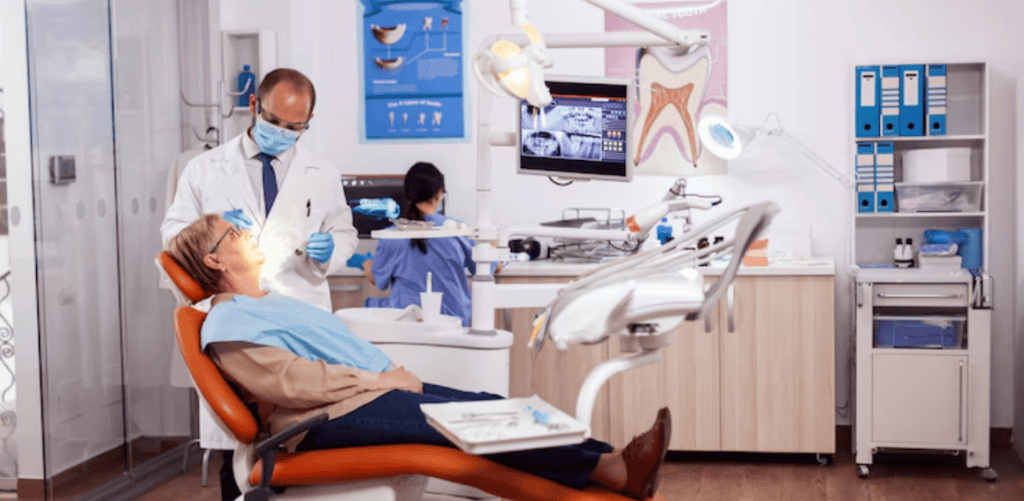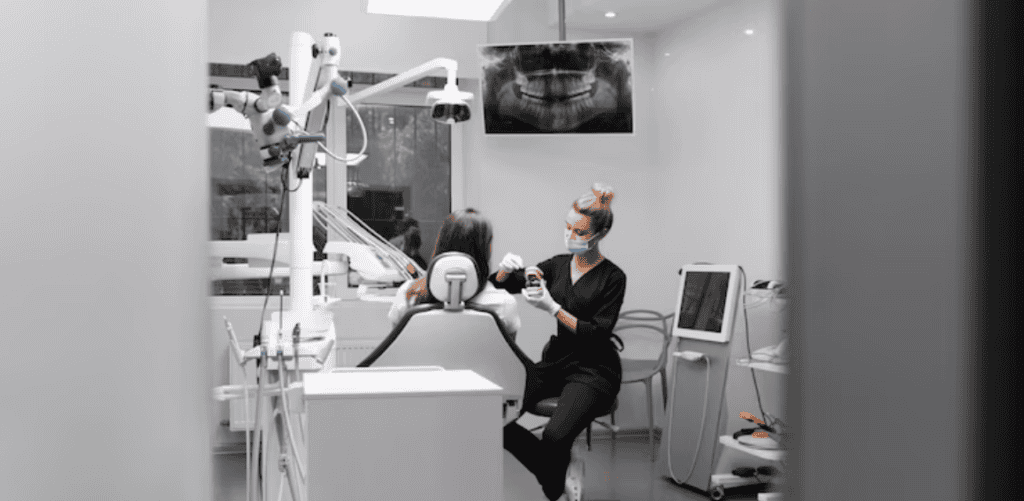By alphacardprocess May 29, 2025

Picture this: A patient approaches the front desk following a routine cleaning. They grab their FSA card, thinking that checkout will be a breeze — then hear, “Sorry, we don’t take that here.” Confused and frustrated, they must now pay up front and deal with paperwork later.
Let’s clear it up.
A HSA (Health Savings Account) is a nontaxable account reserved for medical expenses. It is open to individuals with high-deductible health plans. An FSA (Flexible Spending Account) does the same thing but is typically through an employer and must be spent in the plan year.
Certainly, more and more patients use these accounts now to proactively manage healthcare expenses. And that’s why it is increasingly important for dental offices to accept HSA and FSA cards. It’s not all about convenience, it is about meeting your patients where they are, financially.
What Are HSA and FSA Cards?
HSA (Health Savings Account): This is a savings account to which you put money to use later for medical expenses that are tax free. To participate, you must be enrolled in a high-deductible health plan (HDHP). Surplus rolls over from year to year and can accrue interest.
FSA (Flexible Spending Account): This one is employer-established. It’s also tax-free money for health care-only. Most of the time, FSA money expires at the end of the year if you don’t use it.
Both HSA and FSA cards allow patients to save on healthcare by spending pre-tax dollars. It’s more value for the dollars spent.
How HSA and FSA Cards Work for Dental Care?
The good news is, many dental treatments are eligible for HSA and FSA spending.
- Cleanings? Covered.
- Fillings, crowns, and X-rays? Covered.
- Braces and retainers? Yes, those too.
Patients can swipe their HSA or FSA card at checkout like a debit card. If the process is fair game, you can do it. That makes the cost of dental care cheaper and easily accessible — something all practices should want.
Why Accepting HSA and FSA Cards Is a Smart Business Move?
Attract More Patients
Many people look for dentists that accepts HSA and FSA cards. It’s not a “nice-to-have”—it’s something they now demand. When your office says “yes” to these cards, you raise your hand and say, “Welcome; let’s make that visit so much easier.” That builds instant trust.
Boost Case Acceptance
When people can spend tax-free money, they are more likely to say “yes” to treatment. Implants and braces become less of a financial burden. You’ll notice fewer delays in getting treatment and more follow-through.
Increase Revenue
Out-of-pocket costs can be a deterrent. But if they can just swipe their HSA or FSA card instead? That hesitation fades. You’ll see faster decisions and less cancellation of appointments. It may even make it easier to upsell cosmetic upgrades or preventive care plans.
Enhance Patient Experience
You’re not just providing an alternative way to pay by accepting HSA and FSA cards. Instead, you’re demonstrating to patients that you understand their budget concerns. That kind of reinforcement sticks with people and gets people coming back to your dental office.

What Dental Procedures Are Eligible for HSA/FSA?
Preventive and Diagnostic
Most routine dental care is fully covered. Patients can use their HSA or FSA for:
- Cleanings
- Oral exams
- Sealants
- X-rays
These basics help catch issues early—and the accounts help cover the cost with pre-tax money.
Restorative Treatments
If it fixes a dental problem, it likely qualifies. Covered treatments usually include:
- Fillings
- Crowns
- Root canals
- Dentures
These aren’t cosmetic—they’re medically necessary. That’s why HSA/FSA funds can be used.
Orthodontics and Periodontics
Braces and gum treatments? Still eligible. Patients can use their cards for:
- Metal or clear braces
- Clear aligners (like Invisalign)
- Periodontal deep cleanings
Just make sure they get a treatment plan or estimate to keep records clean for reimbursement.
Cosmetic Treatments – Gray Areas
Here’s where it gets tricky. Teeth whitening? Usually not covered with HSA and FSA cards. Anything done for cosmetic reasons may be declined.
So how do you explain that to a patient? Be upfront. Tell them whether, if a procedure makes you able to function better, or live longer, it probably qualifies. If it’s for looks alone, it probably is not. Tell them to check with their HSA/FSA supplier to find out.
Compliance and Guidelines You Must Know
Accepting HSA and FSA cards at your dental office is not only wise, it is also regulated. The following steps help ensure that you are paid, your business is protected and your patients are satisfied.
IRS Requirements for Eligible Expenses
The IRS Publication 502 is your resource for what dental costs qualify. It details what is permitted under HSA and FSA plans. Most preventive and necessary health and dental services are covered. But cosmetic treatments like teeth whitening are not.

You will need to have good records. That’s right: Treatment plans, itemized receipts and correct service codes. If a patient gets audited, they’ll need that info and you want your records to support them.
Establish an easy system for your front desk. There should be a printed receipt, which includes the procedure and date, for every transaction processed with an HSA/FSA card. You may want to keep a copy on file for your own protection as well.
Merchant Category Codes (MCCs)
Here’s something many dental offices overlook: Merchant Category Codes (MCCs). Your payment terminal must be set up with the correct MCC. For dental offices, that’s typically 8021.
Why does this matter? HSA and FSA providers use MCCs to decide if a purchase is eligible. If your office uses the wrong code, the card could be declined—even if the procedure qualifies.
You should talk to your payment processor. Then ask them to confirm that your MCC is the right one. If you’re changing processors or setting up a new terminal, account for this step. It’s a small adjustment that steers you clear of significant payment headaches.
Avoiding Common Pitfalls
Mistakes happen. But the stakes are higher when it comes to HSA and FSA cards.
One of the most frequent problems is charging for services not covered. If you sell other products like whitening kits, or electric toothbrushes, don’t charge them to an HSA/FSA card by default without confirming the patient is allowed to utilize the funds.
Some other key ones: not providing itemized receipts. Patients need to have evidence the charge was for a covered service. A generic receipt that says “dental services” will be rejected. Break it down clearly.
Staying compliant builds trust with patients and protects your practice from payment disputes. It also keeps you aligned with IRS and card provider guidelines—so you don’t lose the ability to accept these cards altogether.
How to Set Up HSA/FSA Acceptance at Your Practice?
Allowing patients to pay with HSA and FSA cards can be a win-win for your bottom line and patient satisfaction, when set up correctly. From payment systems to team training, taking your operation online can be easier than you think if you follow these tips.
Choose the Right Payment Processor
Perhaps most payment processors don’t accept HSA and FSA cards. You want one that supports these card types, sets the proper Merchant Category Code (MCC) — typically 8021 for dental — and includes robust reporting.

A good processor will also flag declined HSA/FSA transactions and explain why. That helps you troubleshoot on the spot and guide patients through other payment options. Ask potential providers if they offer itemized transaction breakdowns and whether they’re familiar with IRS compliance requirements. Besides that, if you are accepting card payments, you must know about PCI DSS standards for dental offices.
Find built-in systems that also accommodate your practice management software or POS. This will create a continuous experience for appointments, payments, and records — and therefore easier to be compliant and do the accounting.
Train Front Office Staff
Your staff represents the front line in patient communication. They need to know what HSA and FSA cards are, which treatments are covered, and how to confidently explain this to patients.
Start by giving a basic overview of eligible vs. non-eligible expenses. Preventive care like exams and X-rays usually qualify, while cosmetic services do not. Staff should always verify card use before charging, especially when a treatment plan includes a mix of both.
Training should cover how to issue itemized receipts, process card payments and respond when a patient’s card is declined. It is useful to have a short script for this so there is no confusion or hurt feelings.
Update Your Website and Forms
When you’re ready for HSA and FSA cards, have patients know. Feature a banner or section on your website that says loudly and boldly, “We take HSA and FSA cards.” Talk about it on your new-patient intake forms, on appointment reminders and even in in-office signage at the front desk or checkout.

Visibility matters. So, a lot of patients actually are wanting to find providers that take these cards. Highlighting this feature gives your practice a professional edge and helps you attract cost-conscious patients.
You may also consider adding an FAQ section on your site. Describe which procedures apply and provide motivation for patients to refer to their plan information. This fosters trust and diminishes confusion when it comes to billing later.
Conclusion
Accepting HSA and FSA cards is more than just a convenience—it’s a strategic move. You’ll attract new patients, improve case acceptance, boost revenue, and enhance trust, all while staying compliant with IRS and payment rules. It’s a low-cost, high-impact upgrade that positions your practice for long-term growth.
Frequently Asked Questions
1. Can patients use HSA and FSA cards to pay for cosmetic dental treatments?
Most cosmetic procedures, like teeth whitening or veneers, aren’t covered by HSA or FSA plans because they’re considered elective and not medically necessary. However, some orthodontic treatments may qualify. It’s best to guide patients to check their plan details or IRS guidelines for specifics.
2. How can I tell if a dental procedure qualifies for HSA or FSA payment?
Eligible dental treatments generally include preventive care (cleanings, exams), restorative work (fillings, crowns), and certain orthodontics. For exact rules, refer to IRS Publication 502, or encourage patients to contact their HSA/FSA plan administrator. Having a clear list at your office can help staff explain eligibility confidently.
3. Do I need special equipment or software to accept HSA/FSA cards?
No special hardware is required. Your payment processor just needs to support HSA/FSA cards and use the correct Merchant Category Code (MCC 8021 for dental). Many modern point-of-sale (POS) systems already handle this, but double-check with your processor to avoid declined transactions.
4. What should I do if a patient’s HSA or FSA card gets declined?
If a card is declined, provide an itemized receipt that shows the procedure and cost. Patients can often submit these receipts for reimbursement manually. Training your staff to calmly explain this process will keep patients happy and informed.
5. Is it safe and compliant to advertise that my practice accepts HSA and FSA cards?
Yes, promoting HSA/FSA acceptance is a common and compliant marketing practice. Just avoid sharing any personal health information in your campaigns to stay within HIPAA regulations. Focus on informing patients about payment options and encouraging them to use their benefits before they expire.